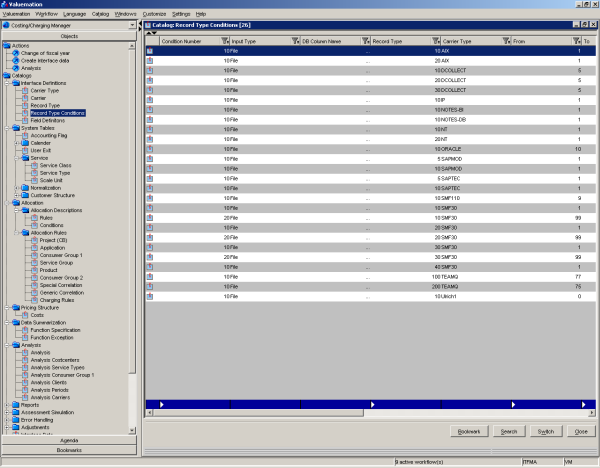Record Type Conditions
A record type condition is specified using the below listed attributes.
Position and/or column name in an input file
Here you indicate over the Start and END column the position and/or column name from the input file. It shows at where the value is and which set will be recognized. They can also indicate a combination of a start column and its length. Missing values will be supplemented by the system.
Condition :
This is the logical comparison operator. It can be:
- EQ Equal. - value is equal to the comparison literal.
- NE not equal. - value is not equal to the comparison literal.
- GT Greater than. - value is larger than the comparison literal.
- NG not greater than - value is not larger than comparison literal.
- LT Less than. - value is smaller than comparison literal.
- NL not less than. - value is not smaller than comparison literal.
Comparison literal
Here you indicate the character string which is to be compared (without high commas).
For each condition, a user exit can be indicated.
CLEAR before working on?
In order to explain the meaning of this field, it should be entered with the proceeding of the generated transfer program.
As expected, the values from the input record are placed into auxiliary fields. With these fields, recognition of the clause type (together with some other processing) is accomplished. The values of these auxiliary fields are written into the output file in the end. If the next input sentence comes to the assumtion, there are two possibilities: to overwrite the auxiliary fields first, delete (CLEARS = ' J ') or not to delete (CLEARS = ' N ') with the new values. Normally the auxiliary fields are deleted, in order to make sure only values from that are processed straight in the set. There might be cases where values from different and successively following sentences are to be mixed. By the assortment it can be guaranteed that sets which belong together can follow one another. This cannot examine the transfer program. The indication whether with a type of clause the auxiliary fields are to be deleted or not, must be located to a type of clause definition in the first line (with the first condition). Data in the following lines will be ignored.

Record type conditions
A superior list from the record types can be found in the catalog 'record type'.